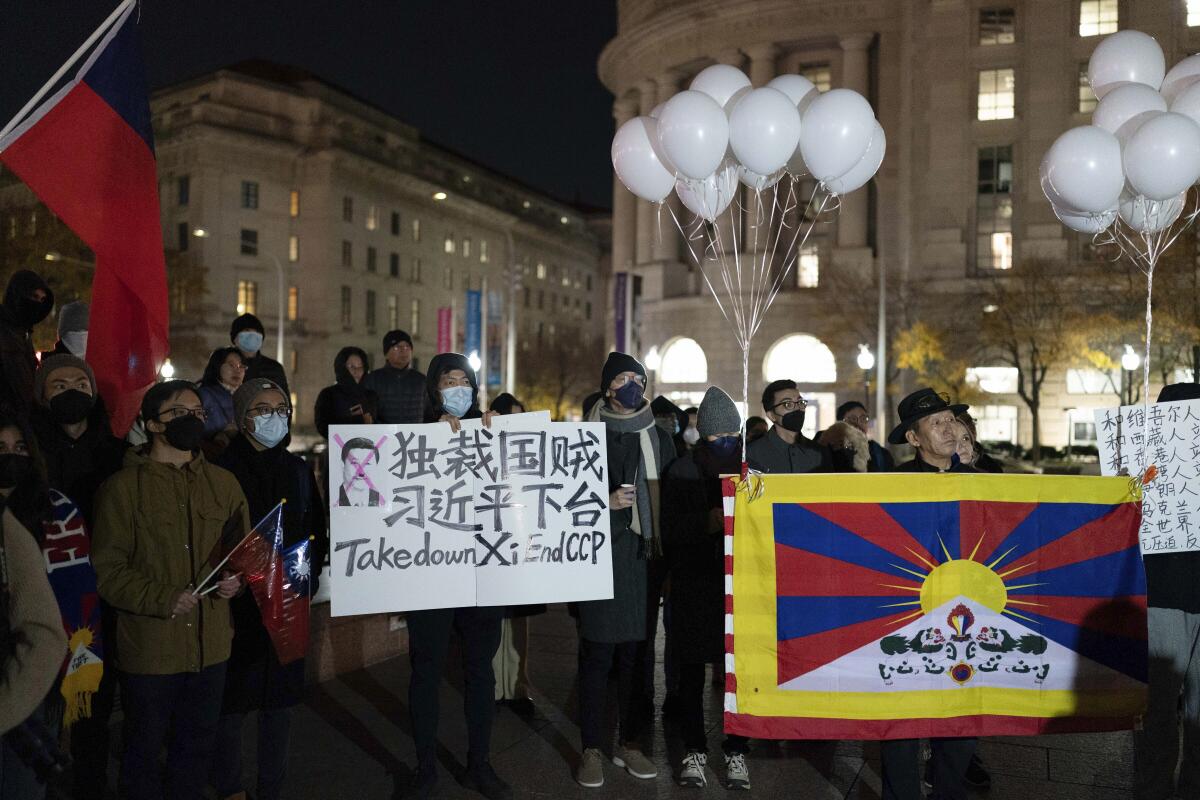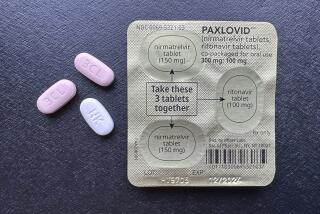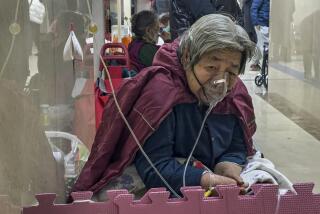Op-Ed: China can’t quell protests until it gets realistic about ‘zero COVID’

- Share via
China has lately experienced its largest and most politically charged protests since the pro-democracy movement in 1989 ended in a massacre by government forces on Tiananmen Square. The recent social eruption should not be surprising; frustrations over the Chinese government’s rigid “zero-COVID” policy have been brewing for a long time. Yet the ruling Communist Party of China apparently did not see the protests coming, despite operating an all-pervasive and deeply intrusive surveillance apparatus. Now, the central government has announced that it will accelerate the shift away from zero-COVID with a broad easing of restrictions. After publishing a set of 20 guidelines for officials to follow last month, it has now cut the list down to 10.
Faced with the protests, President Xi Jinping’s government
eschewed brutal Tiananmen-style suppression of the demonstrations. While large numbers of police have been deployed to protest sites, they appear to be avoiding bloody “crowd-control” tactics and mass arrests, preferring instead to identify and intimidate protesters using cellphone-tracking technology.
But party leaders have now warned that a “resolute crackdown” is coming. According to Chen Wenqing, the newly installed domestic security chief, authorities will target “infiltration and sabotage activities by hostile forces” and “illegal and criminal acts that disrupt social order.”
While China’s government has sent a relatively clear message about the fate of the protests, its stance on zero-COVID remains hazy. Some recent signs point to a softening of the policy. The phrase “dongtai qingling” (dynamic zero-COVID) has apparently disappeared from state-run media in recent days. Restrictions have been relaxed in some cities, such as Guangzhou, Hangzhou and Shanghai. And Vice Premier Sun Chunlan, who is overseeing the pandemic response, has acknowledged the “weakening severity of the Omicron variant.”
But it would be premature to conclude that China is abandoning its zero-tolerance approach, not least because no senior Chinese official has said as much publicly. Sun has said only that the fight against COVID-19 has entered a “new phase.” And Xi — with whom the decision ultimately rests — has remained conspicuously silent.
With little direction from above, local governments have adopted widely different policies. For example, though Shanghai’s municipal government has announced the easing of some rules — as of Dec. 5, a negative COVID test will no longer be required to take public transportation or visit parks — it has again shut down the recently reopened Disneyland.
Chinese leaders’ refusal to take a clear stance on zero-COVID is pure politics. The central government is reluctant to take responsibility for the decision, because policymakers do not want to be blamed for whatever surge in infections, hospitalizations and deaths follows a reopening. The new guidelines may be looser than what came before, but they do not necessarily represent an end to zero-COVID.
Local officials are playing politics, too. If they are relaxing pandemic restrictions, it is because they believe that doing so will serve their interests well enough to merit the risk to public health. If they have stuck with harsher restrictions, it reflects their calculation that the immediate hit to their popularity would be dwarfed by the impact of becoming a scapegoat for any wave of cases.
Perhaps the clearest and most worrying evidence of the politicization of public health decisions is the Chinese authorities’ refusal to approve the more effective mRNA vaccines produced by Western companies. Though these vaccines would help to make a zero-COVID exit safer, especially for the currently under-vaccinated elderly, China’s leaders apparently view the use of Western vaccines as a blow to national pride and an admission of past mistakes.
China’s leaders can probably count on the security forces to snuff out new protests, thereby allowing the Communist Party of China to reassert control and downplay people’s frustrations. But the longer they muddle through on zero-COVID, the greater the risk to public health. In fact, the refusal to devise a comprehensive and systematic exit strategy — and take responsibility for its outcomes — could result in China experiencing the worst of both worlds.
If there is still confusion over Xi’s commitment to zero-COVID and the central government’s reopening plans will produce a chaotic response at the local level, and the continued enforcement of ever-changing pandemic restrictions will strain state attention and resources, while stoking popular frustration. At the same time, an unsystematic loosening of restrictions that is not backed by effective public health measures — such as a rapid mass immunization campaign using Western vaccines — would send infection rates soaring, overwhelming China’s healthcare system.
Xi needs to act fast to avert this outcome, not least by ordering the immediate approval and import of mRNA vaccines. Such a move would demonstrate not only political courage but also political savvy, because it would go a long way toward repairing the damage done to Xi’s image by the anti-lockdown protests that rocked his government at the end of November.
Minxin Pei is a professor of government at Claremont McKenna College.
More to Read
Updates
9:26 a.m. Dec. 7, 2022: Updates to reflect China’s announcement Wednesday of fewer COVID-related restrictions.
A cure for the common opinion
Get thought-provoking perspectives with our weekly newsletter.
You may occasionally receive promotional content from the Los Angeles Times.










